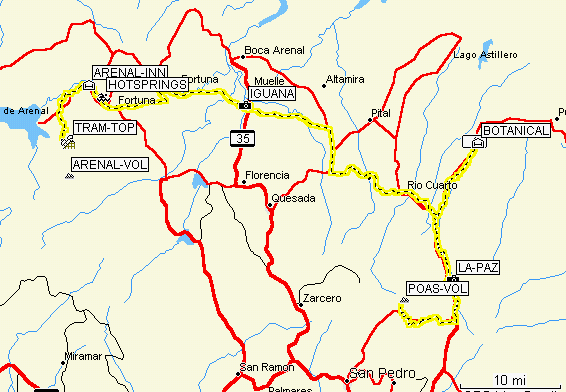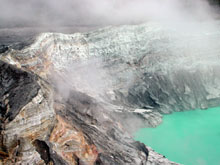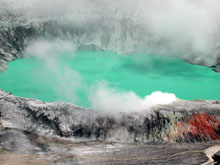
Garmin location map of the Poás
Volcano and La Paz Waterfalls, southwest from the Botanical Gardens
Poás at (8,442 feet maximum elevation) is a restless giant with a 40-year active cycle. It erupted moderately in the early 1950s and has been intermittently active ever since. The park is frequently closed to visitors because of sulfur gas emissions. Over the millennia it has vented its anger through three craters. Two now slumber under a blanket of vegetation, but the main crater bubbles persistently with active fumaroles and a simmering lake. The sulfuric pool frequently changes hues and emits a geyser up to 600 feet into the steam-laden air. The water level of the lake has gone down about 15 meters during the past decade, one of several indications of a possible impending eruption. In the 1950s a small eruption pushed up a new cone on the crater floor; the cone is now 220 feet high and still puffing.

Garmin location map of the Poás
Volcano and La Paz Waterfalls, southwest from the Botanical Gardens

 .....
..... .....
.....
Closer views of the crater.
As it turned out, the day was unusually
clear and the wind blew the sulfur fumes away from us.